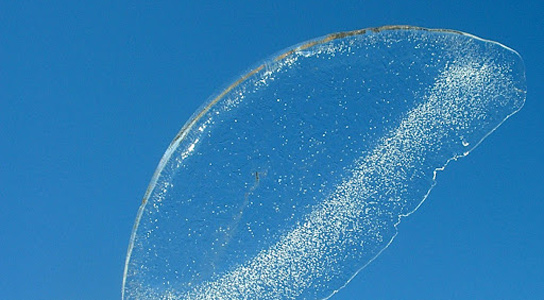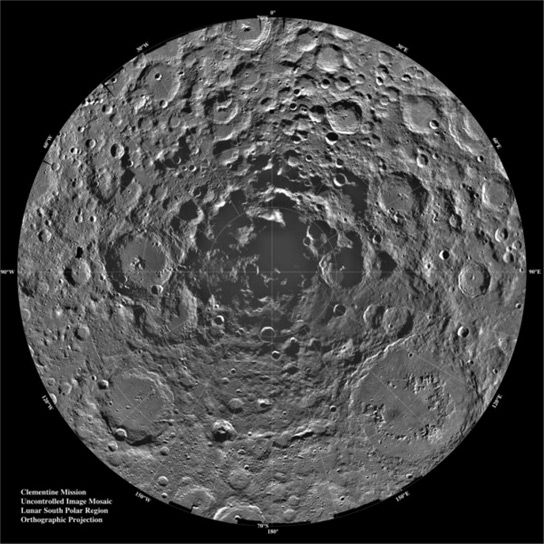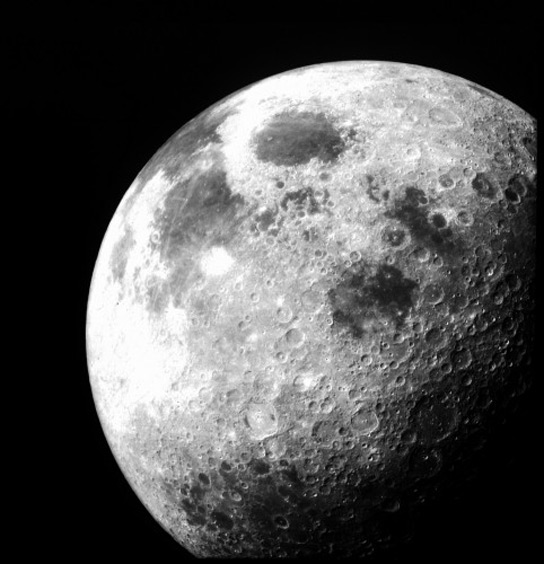
Yellow spots indicate best guesses for volatiles
There might be more ice on the Moon than was previously thought. There are permanent shadows far from the lunar poles, which has expanded the number of sites that would be good candidates for exploration by robotic rovers or even possible locations of future moon bases.
Scientists published their findings in the journal Nature. Astronomers have known for decades that the Moon’s poles host craters with lofty rims, which shield their floors from sunlight, making searches difficult. Over the past few months, astronomers have built a catalog of other permanently shadowed regions on the Moon.

The team used software they developed, called LunarShader, to simulate the lighting conditions on the moon throughout its solar cycles. Once topographical models were inputted, the software identified 100 craters that could contain permanent shadows. Some of them are located as many as 58 degrees of latitude from the pole in both hemispheres.
The findings open a much larger area where permanently manned stations could be established. Although any mission sent to study water ice on the Moon will still need detailed maps of its distribution.
The craters are only half the temperature of their better-lit surroundings, about 175 °K (-98 °K or -145 °F), but still hot enough to boil water in the Moon’s thin atmosphere, so any ice must be insulated beneath the surface.
These non-polar areas offer unique environments that could harbor volatiles. The team is currently characterizing other potential sites that are permanently shadowed. Even with the use radar instruments on orbiting spacecraft, close-up observations are needed to confirm any findings. This could be limited to rovers, which would need some technology that would allow them to function in darkness. It’s been proposed to use solar masts, at least 10 meters (33 feet) in height, to act like a solar snorkel to soak up the sun in order to power these rovers.

Reference: “Constraints on the volatile distribution within Shackleton crater at the lunar south pole” by Maria T. Zuber, James W. Head, David E. Smith, Gregory A. Neumann, Erwan Mazarico, Mark H. Torrence, Oded Aharonson, Alexander R. Tye, Caleb I. Fassett, Margaret A. Rosenburg and H. Jay Melosh, 20 June 2012, Nature.
DOI: 10.1038/nature11216









amazing foto’s hats off